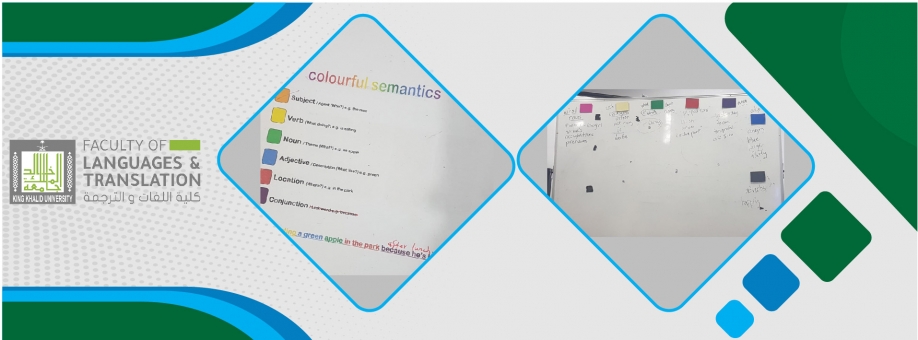How to Use Colourful Semantics in Writing Classes Workshop
The Women's College Scientific Research Committee organized a workshop on 'Colourful Semantics' on Monday, November 4, 2019. The workshop, which was delivered by Dr. Sheila Simpkins focused on the use of the 'colourful semantics technique' in teaching writing classes. Dr. Simpkins started the workshop by referring to the origin of ‘colourful semantics’. This approach, which was created by Alison Bryan, uses colour codes to breakdown sentence structures to help young learners to develop their grammar but it is rooted in the meaning of words (semantics).
She further explained that colourful semantics reassembles sentences by cutting them up into their thematic roles and then colour codes them. The colour scheme for these cards relates to the types of words in a sentence. For example, verbs are orange and nouns are either yellow or green.
"Colourful Semantics, which is an approach used with learners with Autistic Spectrum Condition, is used in Speech and Language Therapy to help young learners with language development," said Dr. Simpkins. She added that she used to apply this technique when teaching students with low motivation, explaining that she found that it was really helpful in motivating students to learn. "Colour semantics is used to make building sentences fun," concluded Dr. Simpkins.
Semantics is the aspect of language function that relates to understanding the meanings of words, phrases, and sentences and using words appropriately when we speak. There are plenty of benefits to using this approach, including encouraging more extensive vocabulary, making sentences longer with more details, and helping students respond to questions developing the use of nouns, verbs, prepositions adverbs, and adjectives.
The workshop was a practical application on the use of the approach to introducing students to sentence structure in writing classes. The workshop was attended by some staff members and graduate students.
Date: 11/4/2019
Source: Dr. Amal Metwally, Scientific Research Committee

